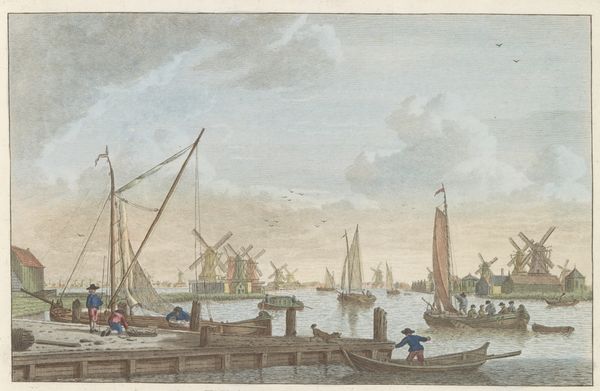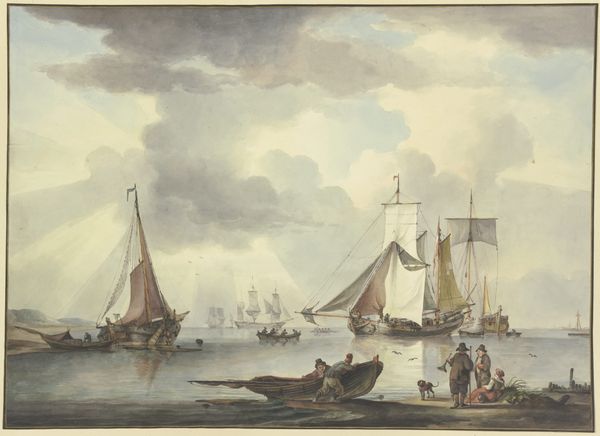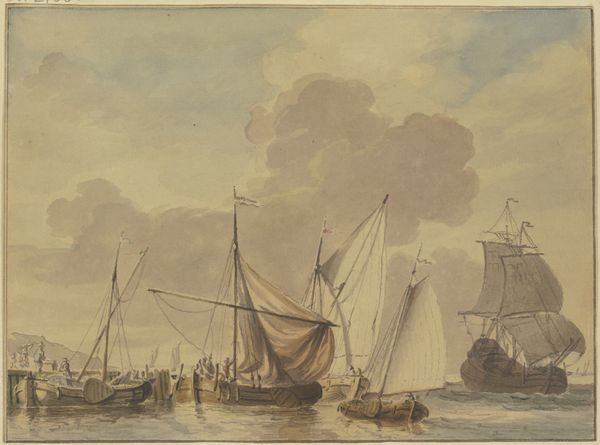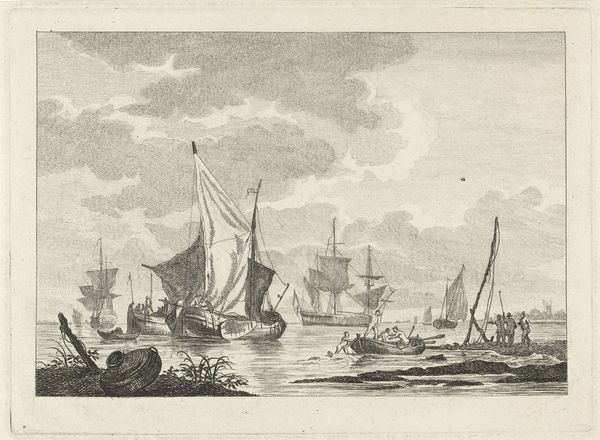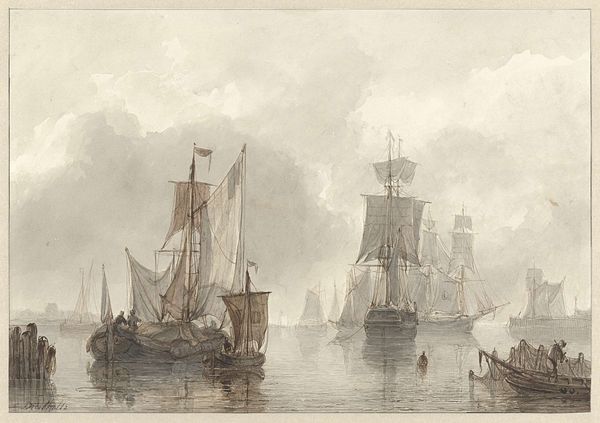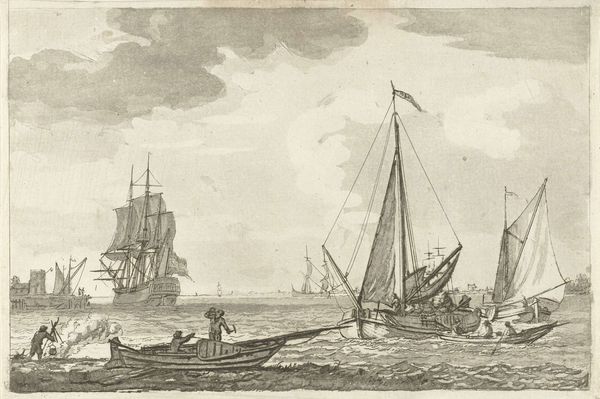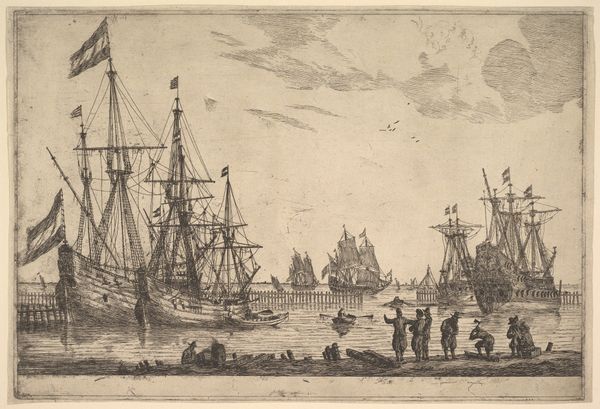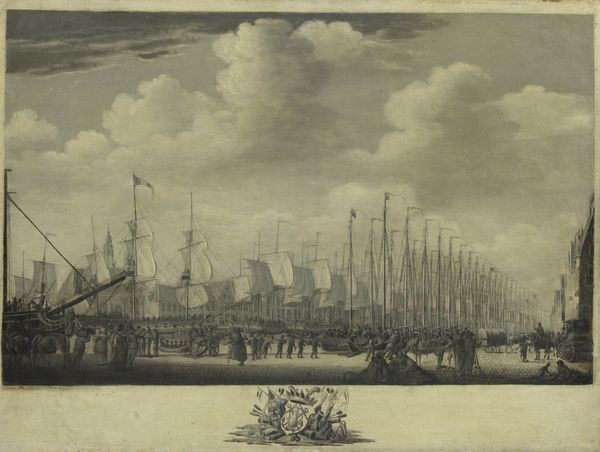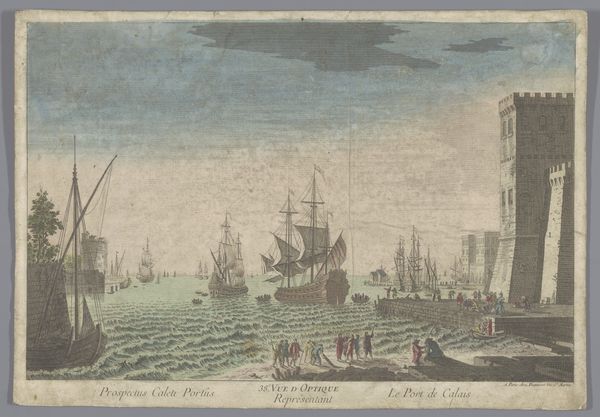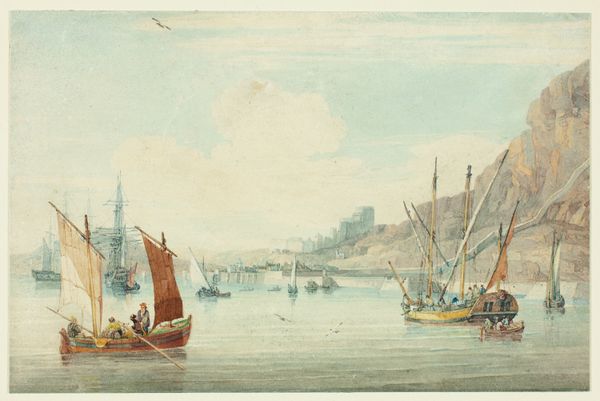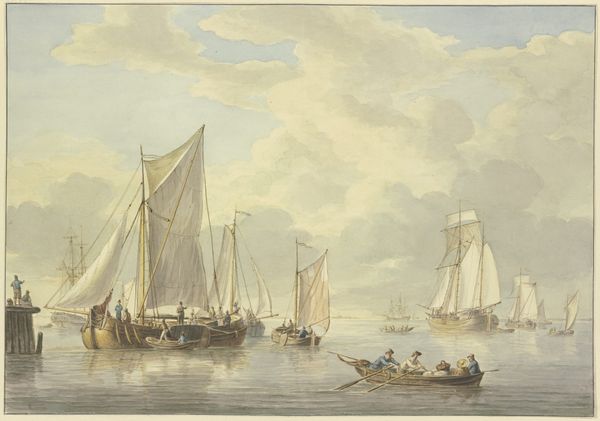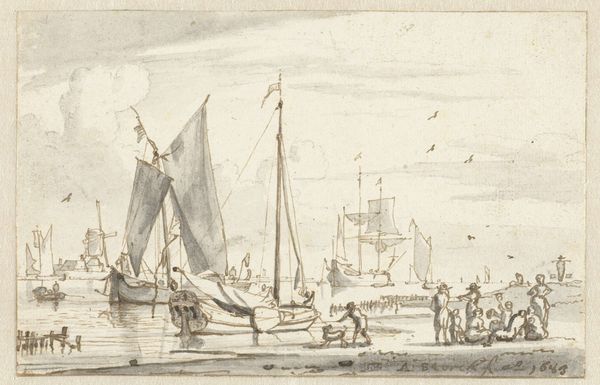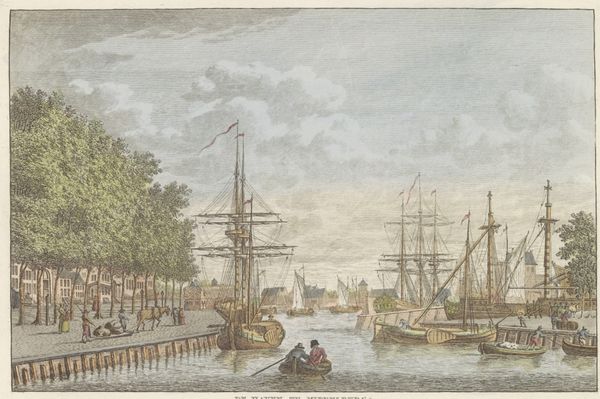
Bei einem Holzdamm liegen Boote, ein Handelsherr mit seiner Frau läßt Waren einladen
0:00
0:00
drawing, coloured-pencil, ink
#
drawing
#
coloured-pencil
#
baroque
#
landscape
#
ink
#
coloured pencil
#
cityscape
#
genre-painting
Copyright: Public Domain
Editor: This is a drawing by Abraham Storck the Elder titled "Bei einem Holzdamm liegen Boote, ein Handelsherr mit seiner Frau laßt Waren einladen." It depicts a busy harbor scene, rendered in ink and colored pencil. It evokes a bustling atmosphere... I'm curious, how do you interpret this work? Curator: This seemingly idyllic scene speaks volumes about the intersection of commerce, class, and colonialism during the Baroque period. The "Handelsherr," the merchant, stands centrally with his wife, overseeing the loading of goods, but at what cost? The scene normalizes the mechanics of global trade, obscuring the exploitation inherent in these exchanges. Who benefits, and who bears the burden? Look closer. Who are the labourers, and what is their socio-economic status in comparison to the merchant and his wife? Editor: I hadn't considered that angle. I was initially drawn to the technical skill in capturing the light on the water. Is the artist deliberately glossing over the social inequalities? Curator: It’s crucial to consider Storck’s position within the dominant power structures. His work serves as a reflection of his time, celebrating Dutch mercantile power, without explicitly acknowledging the brutal realities of colonialism and the slave trade which underpinned it. What does this omission tell us? It prompts us to question whose narratives are being privileged and whose are being silenced. How does understanding this historical context shape our contemporary understanding of this image? Editor: I see your point. So, beyond the aesthetic appeal, it invites a deeper engagement with ethical issues, doesn't it? Curator: Exactly. The drawing acts as a portal, prompting us to dissect the social, political and ethical implications embedded within seemingly innocuous depictions of daily life. It encourages critical examination of the legacies of power and wealth, even today. Editor: Thanks! I definitely see it differently now, with a much deeper understanding of its context. Curator: And that’s the power of engaging with art critically. We move beyond the surface to uncover the complex layers of history, power, and representation that shape our world.
Comments
No comments
Be the first to comment and join the conversation on the ultimate creative platform.

